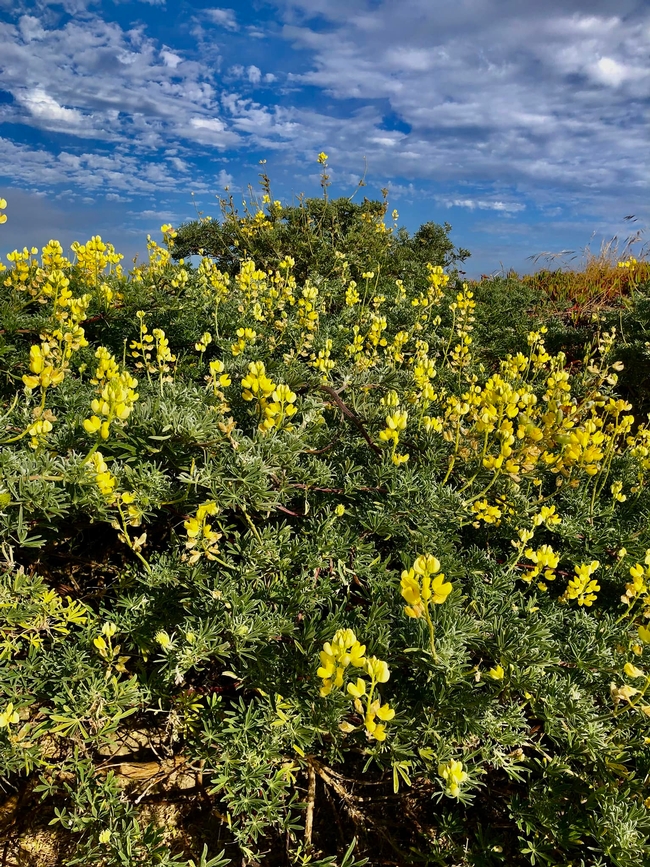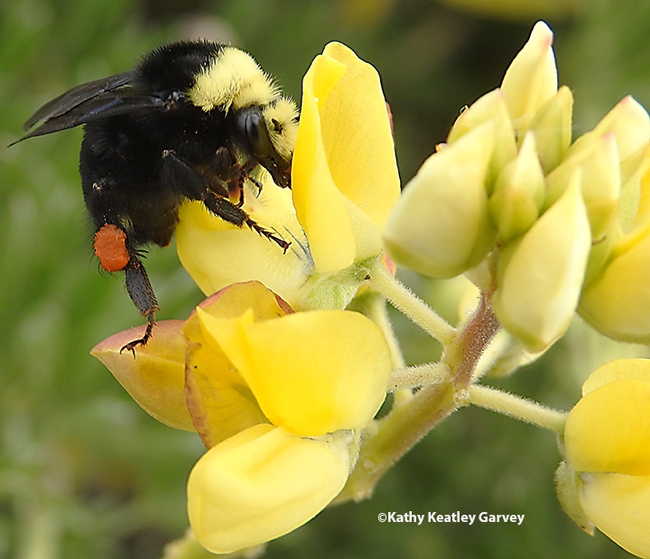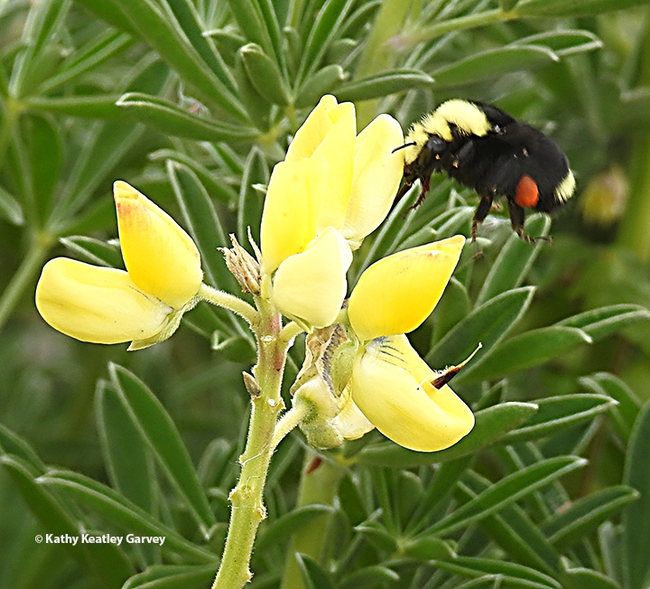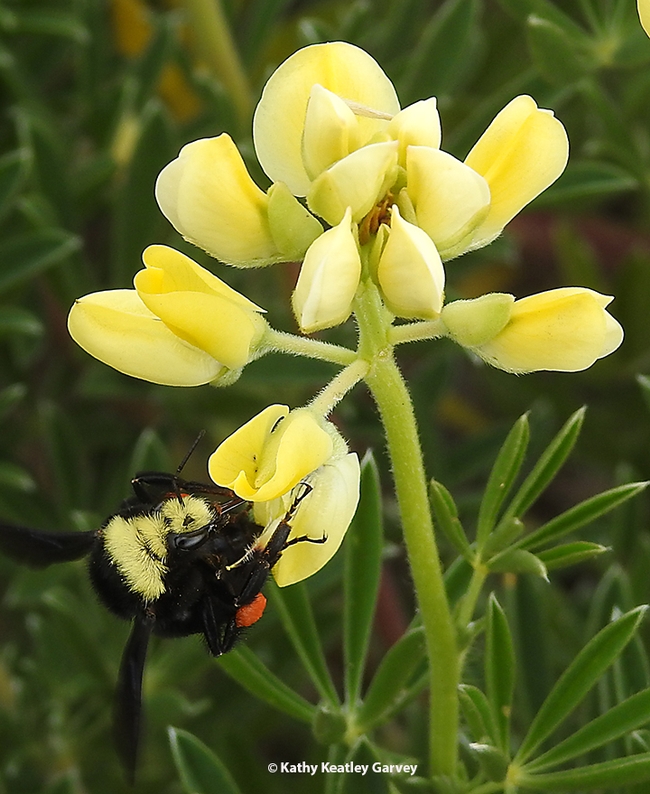
She buzzed from blossom to blossom at Doran Regional Park while packing a ball of red pollen that seemed to increase in brilliance with every floral visit.
A native bee, Bombus vosnesenskii, on a native plant, Lupinus arboreus.
B. vosnesenskii queens are larger than the workers. Queens measure between between 18 and 21 mm long, while the workers (females) range from 8 and 17 mm. The males? 10 to 15 mm long.
The yellow bush lupine, which can reach a height of seven feet and a width of four feet, seems to be occupying places where the invasive ice plant took hold. Volunteers from the California Native Plant Society are removing the ice plant at Doran Regional Park and Bodega Head. (Bumble bees forage on ice plant blossoms, as well.)
The California Invasive Plant Council describes yellow bush lupine as "native to southern and central California. It was introduced repeatedly to many dune systems as a sand stabilizer during the early to mid-1900s...it "reproduces solely by seed. It is self-compatible and is pollinated by bumble bees."
Globally, there are 250 bumble bee species, all in the genus Bombus. B. vosnesenskii is one of the most common Bombus species on the West Coast. Thankfully, it has not reached endangered status.
For more information on bumble bees, read Bumble Bees of North America: An Identification Guide (Princeton University, 2014), co-authored by Robbin Thorp (1933-2019) distinguished emeritus professor, UC Davis Department of Entomology and Nematology.
Attached Images:

A queen yellow-faced bumble bee, Bombus vosnesenskii, foraging on yellow bush lupine at Doran Regional Park, Bodega Bay. Note the bright red pollen. (Photo by Kathy Keatley Garvey)

The queen yellow-faced bumble bee, Bombus vosnesenskii, heads for another yellow bush lupine blossom at Doran Regional Park, Bodega Bay. "Bombus" is derived from a Latin word meaning buzzing or a humming sound. (Photo by Kathy Keatley Garvey)

Close-up of the head and thorax of a queen bumble bee, Bombus vosnesenskii. (Photo by Kathy Keatley Garvey)